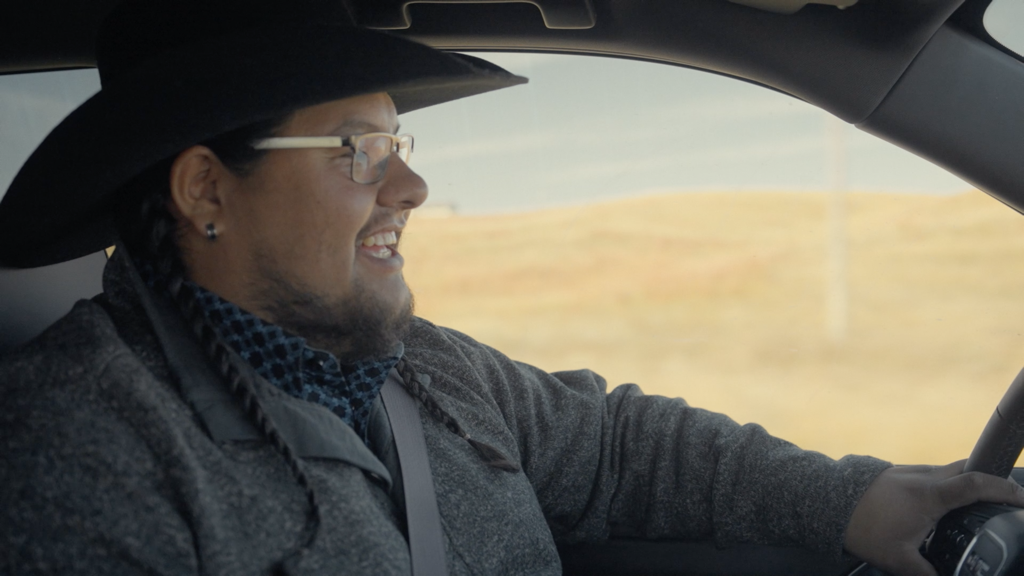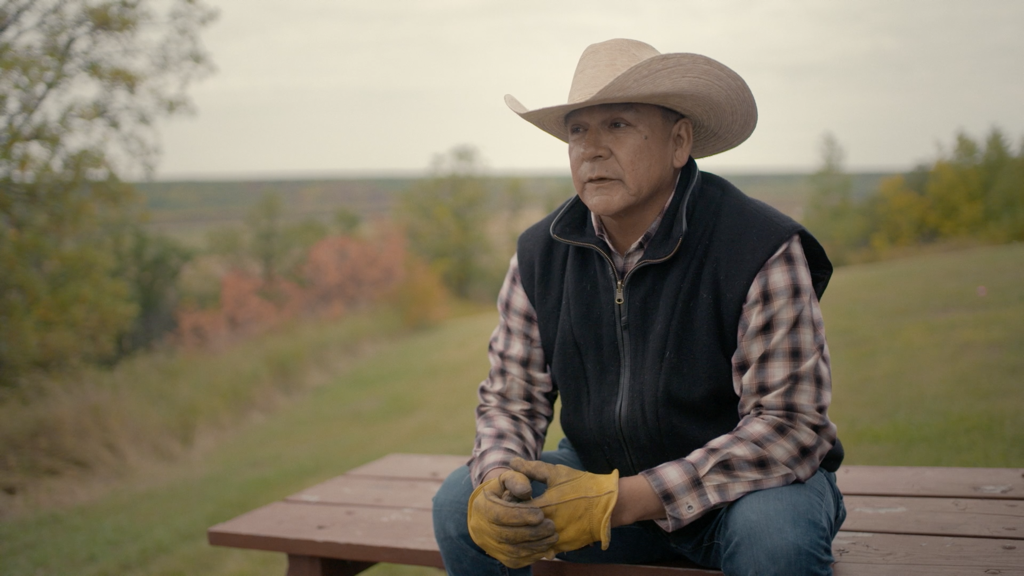7
EPISODE SEVEN :
SIOUX VALLEY DAKOTA NATION
With a population of 2,400, Sioux Valley, located in Southwestern Manitoba is the largest Dakota community in Canada. In 1862, the US military drove many Dakota people into Canada, where they have since been treated as political refugees by the Canadian government. A history of exclusion from treaty negotiations has since fostered a culture of self-governance. Meet Koda, Helena and Travis, who by embracing their traditional culture and using the animals of their Nation as a conduit for healing, have taken on the task of regaining sovereignty over their own affairs.
OUR STORYTELLERS

KODA

HELENA

TRAVIS
BUFFALO
tȟatȟáŋka
The Dakota people have always had an intrinsic link with the buffalo. Known as tȟatȟáŋka in Dakota, the animal has long been essential to the survival of the people. Before colonialism, an estimated 50 million buffalo lived across North America.
The people moved with the herds and relied on all parts of the animal for their survival, not just as a main source of food but also for necessities like clothing, tools and shelter. This relationship fostered a deep spiritual and physical connection between the animal and the people.
According to the Legend of the White Buffalo, in a time of great famine, two scouts were sent away to search for food. A beautiful woman dressed in white appeared before the men and returned to their camp.
The woman said she would help the Dakota people rise to full strength again. She taught the people the Seven Sacred Rites and gifted them the sacred pipe before turning into a white buffalo calf and disappearing. Shortly after vanishing, boundless herds of bison began appearing outside the camp, ending the famine.


But the westward expansion shattered this millennia-old symbiotic relationship. In 1867, a US army colonel said, “Kill every buffalo you can! Every buffalo dead is an Indian gone.” This call for genocide was violently implemented, both in the United States and Canada.
During the 19th century, 5,000 buffalo were slaughtered every single day in the prairies, both for profit and for sport. White settlers killed the animals to clear land for farming and then sold their bones to be transformed into fertilizer. By 1880, the wild bison was nearly extinct, while the Indigenous people who depended on them were forced into starvation and onto reservations.
But as it was foretold in the Legend of the White Buffalo, the bison are indeed returning. Indigenous nations across North America are spearheading initiatives to bring back buffalo populations and rekindle the co-dependent relationship between them. For many, the return of the buffalo marks a return to traditional knowledge and culture and a renewed sense of pride in what it means to be Indigenous.

CONTACT US
Have a story about your own little big community?
Reach out and let us know! We would love to help you tell it.
